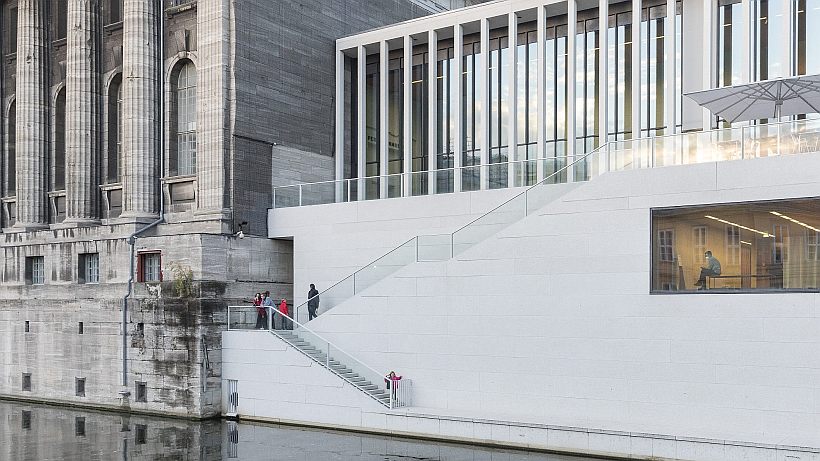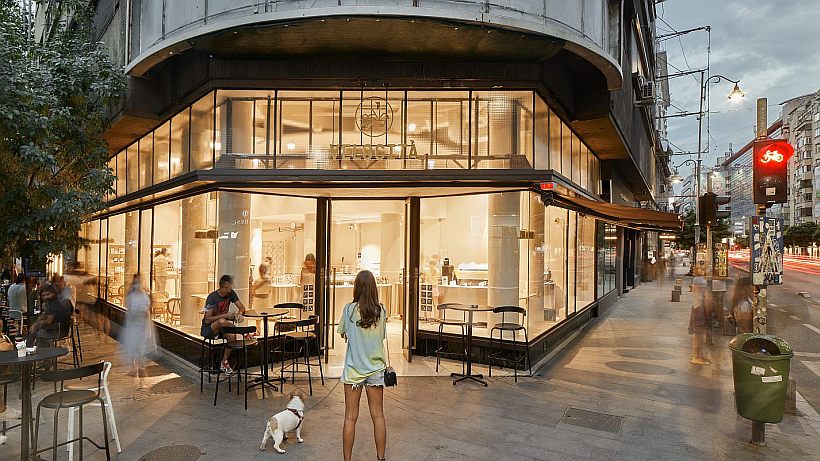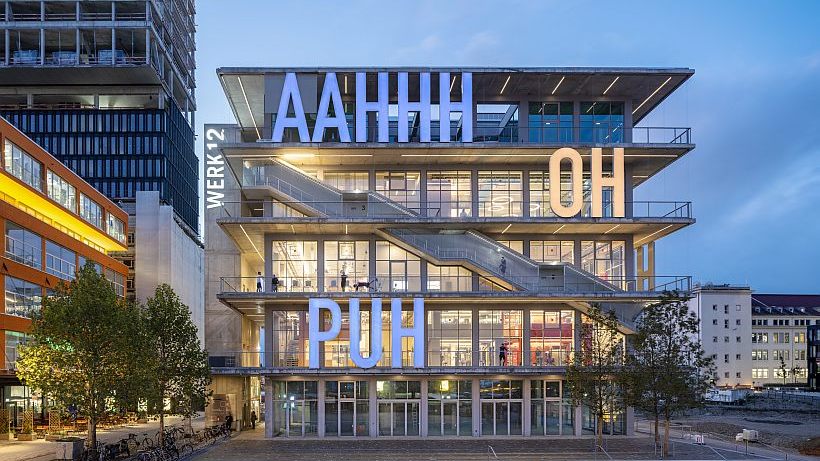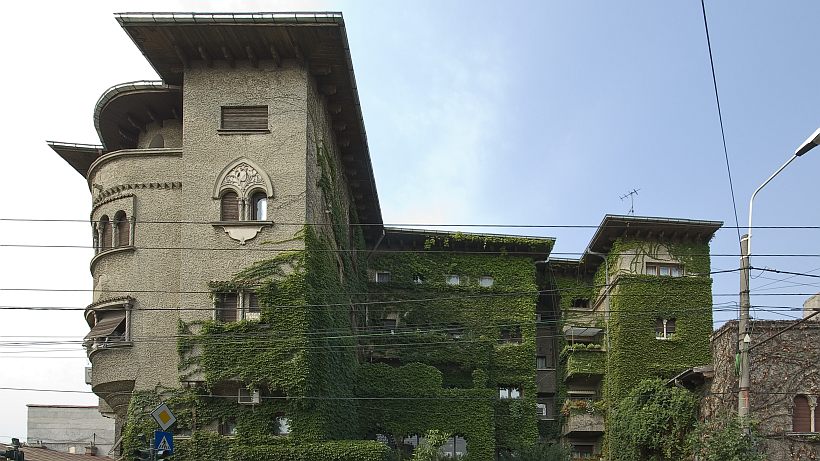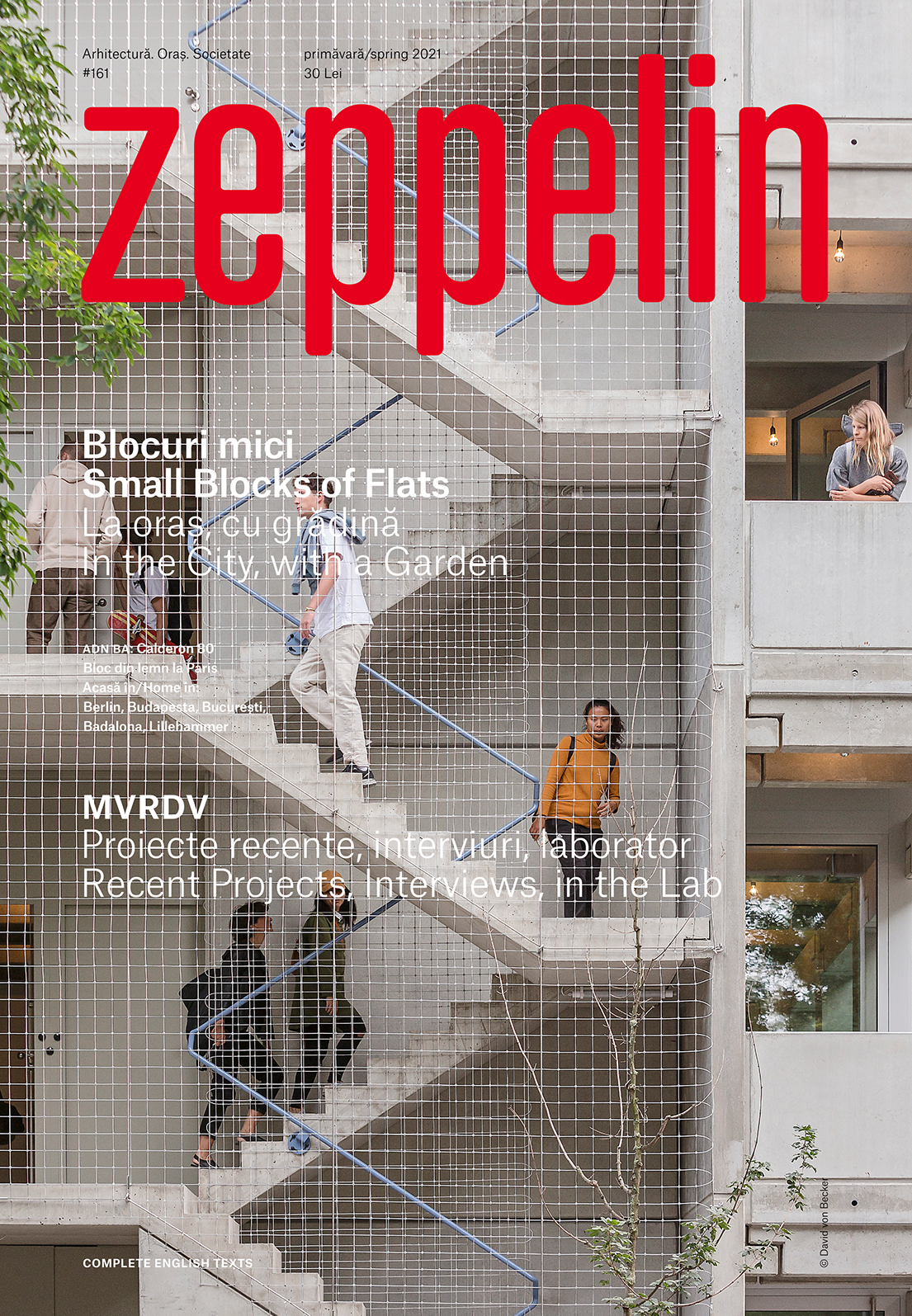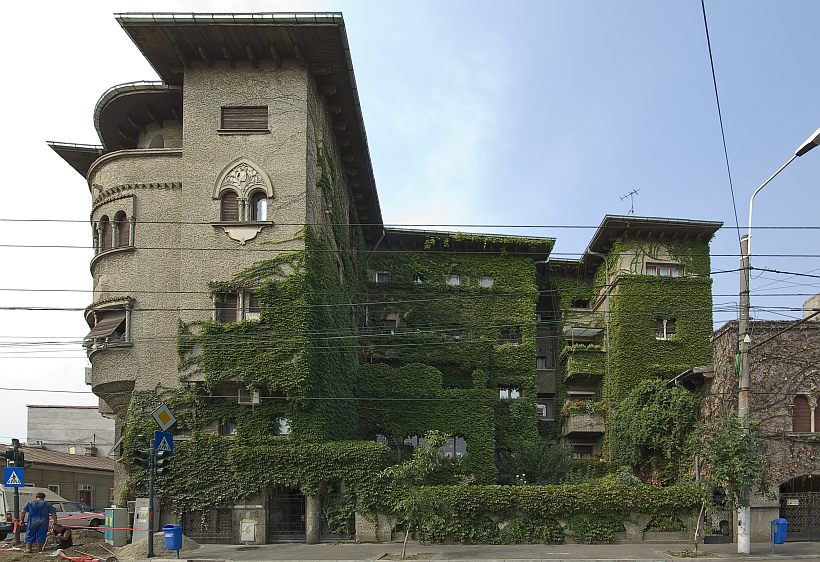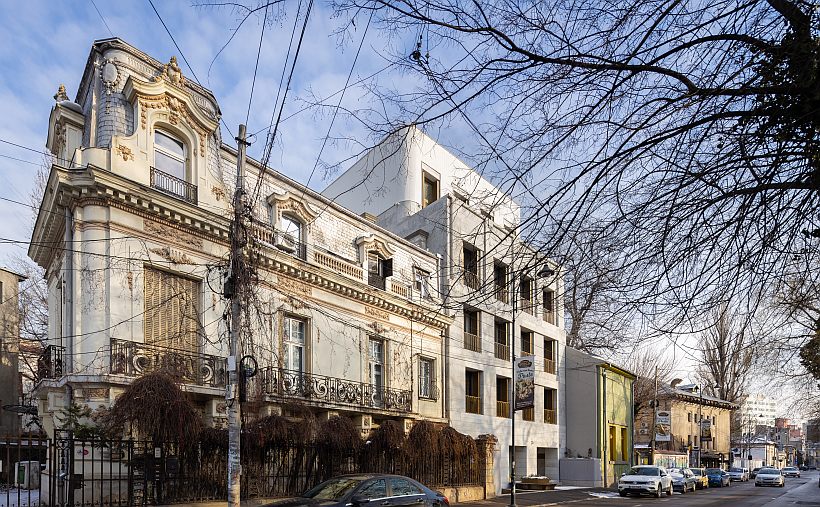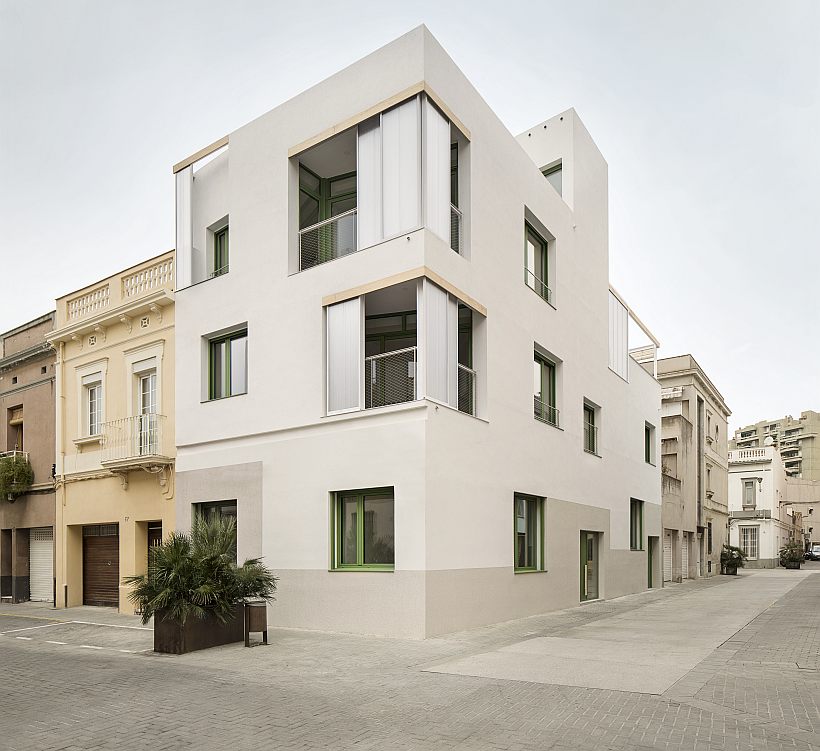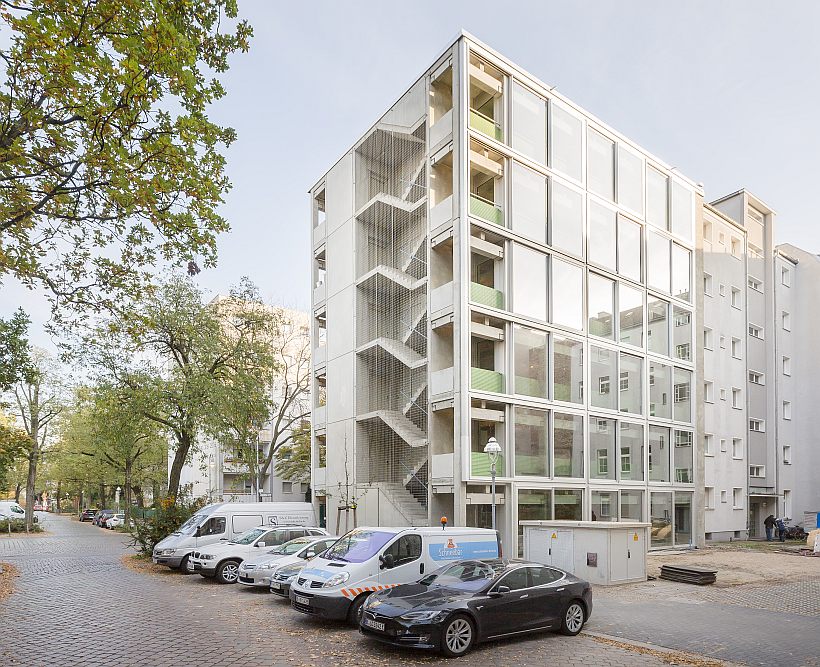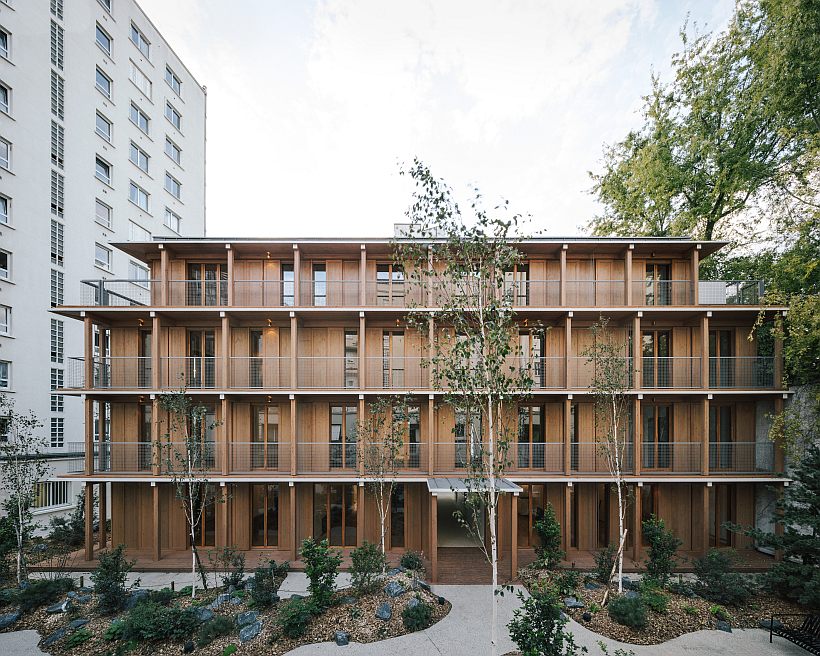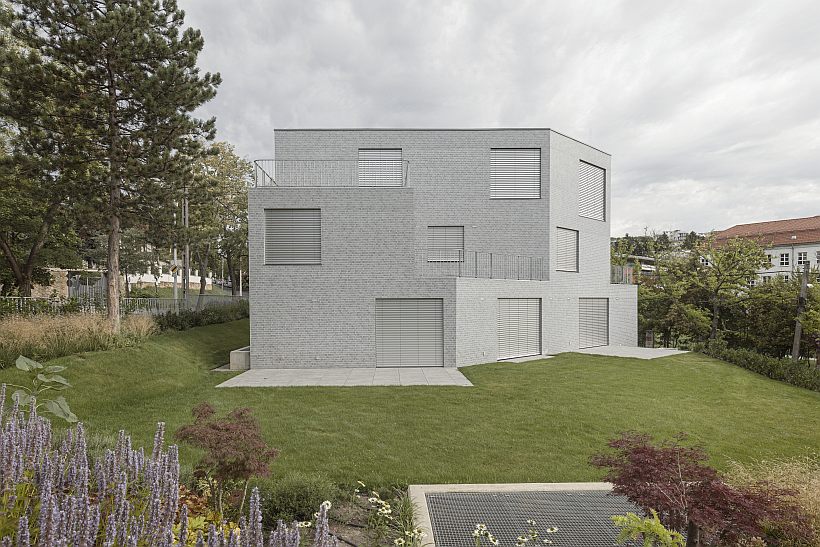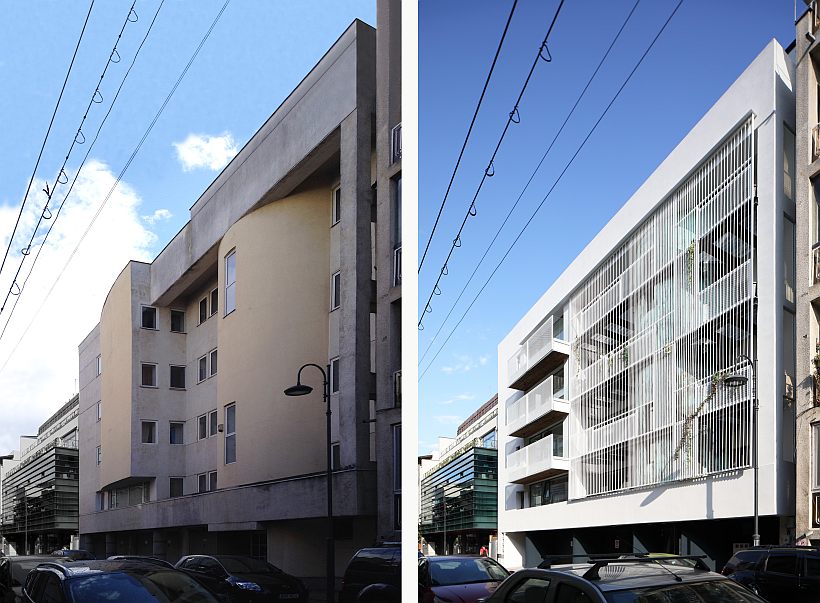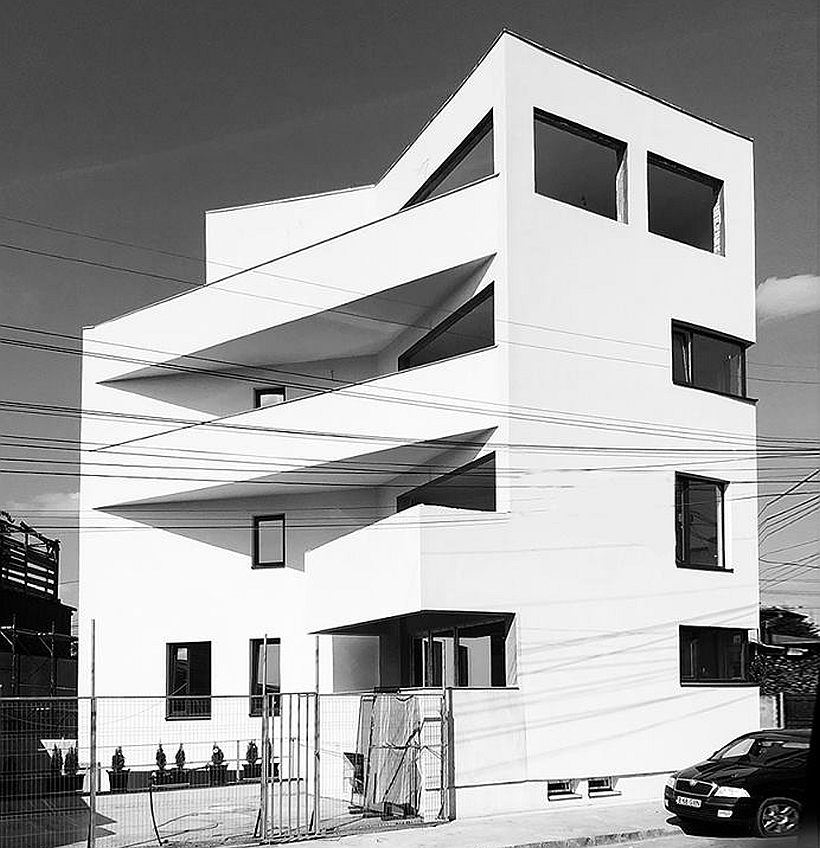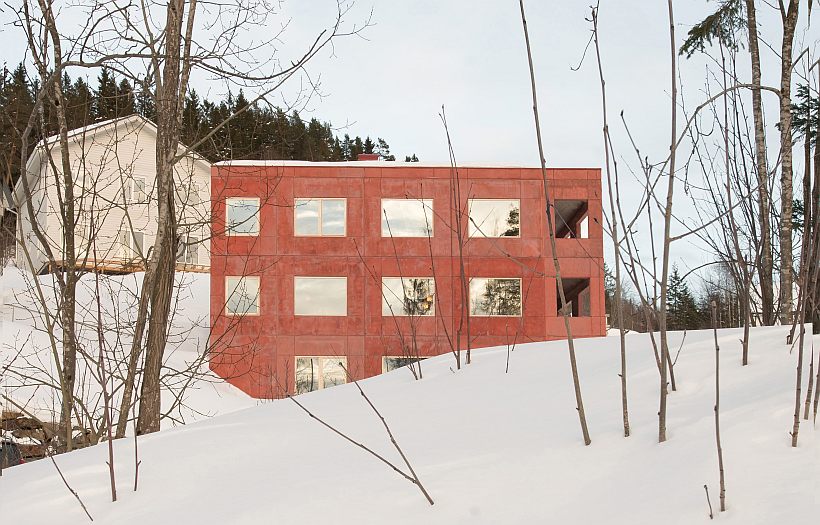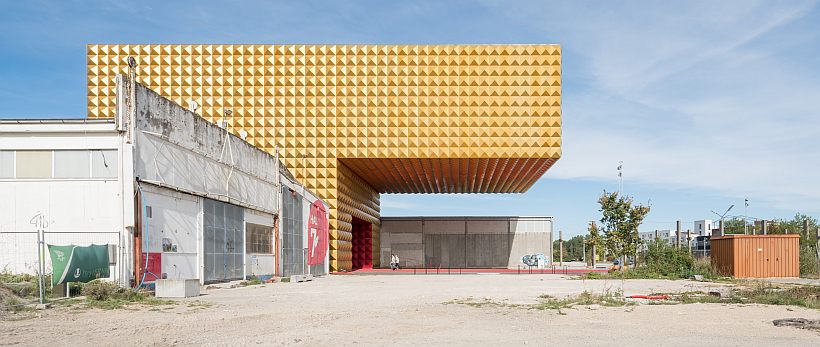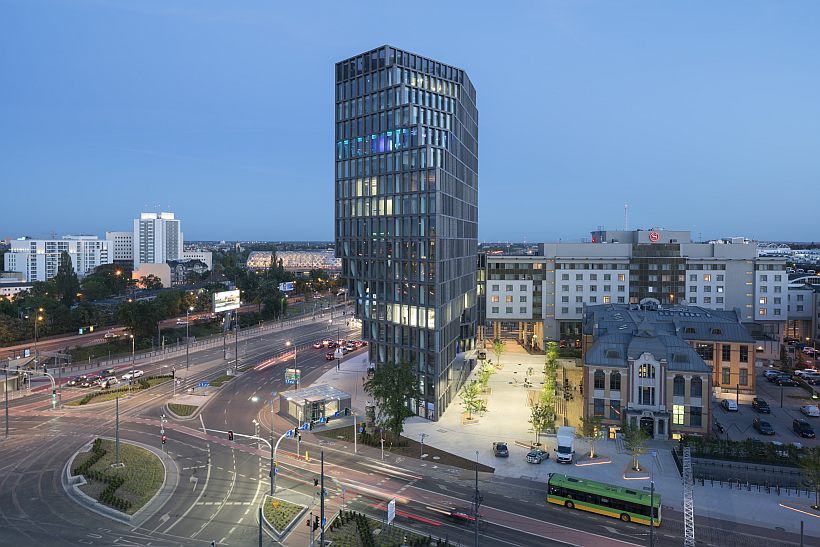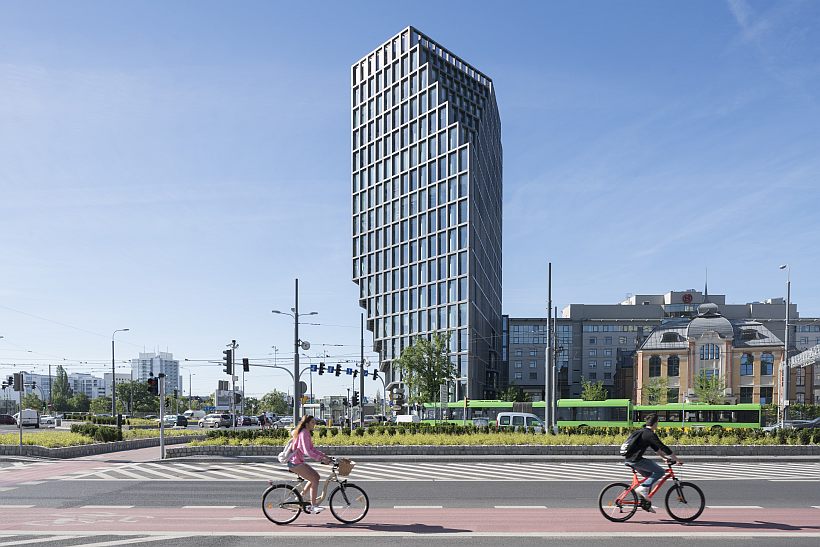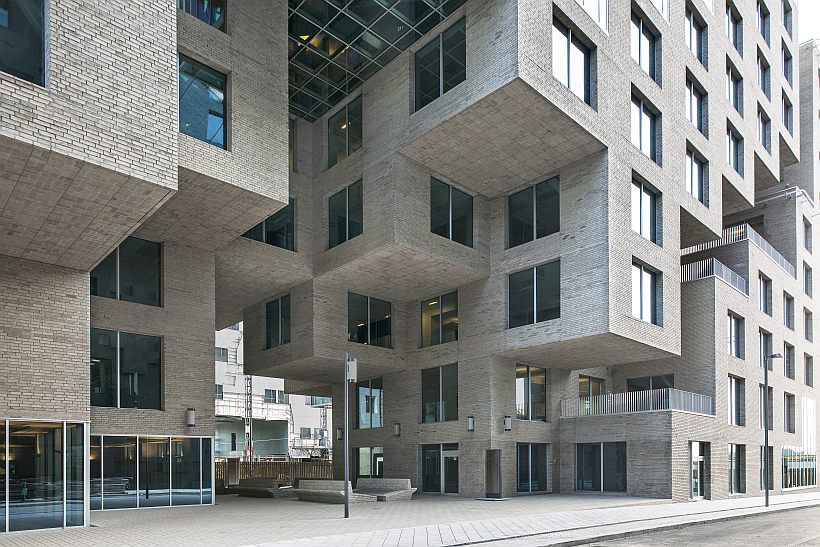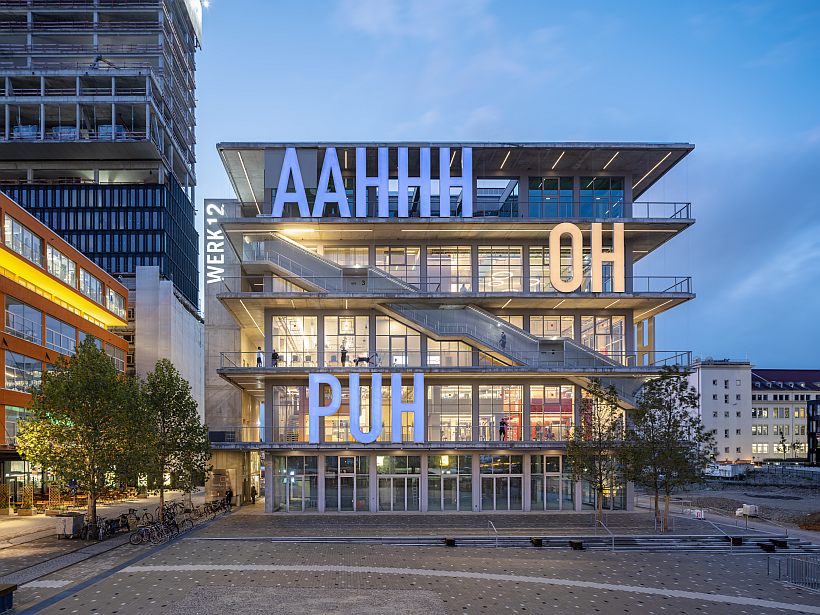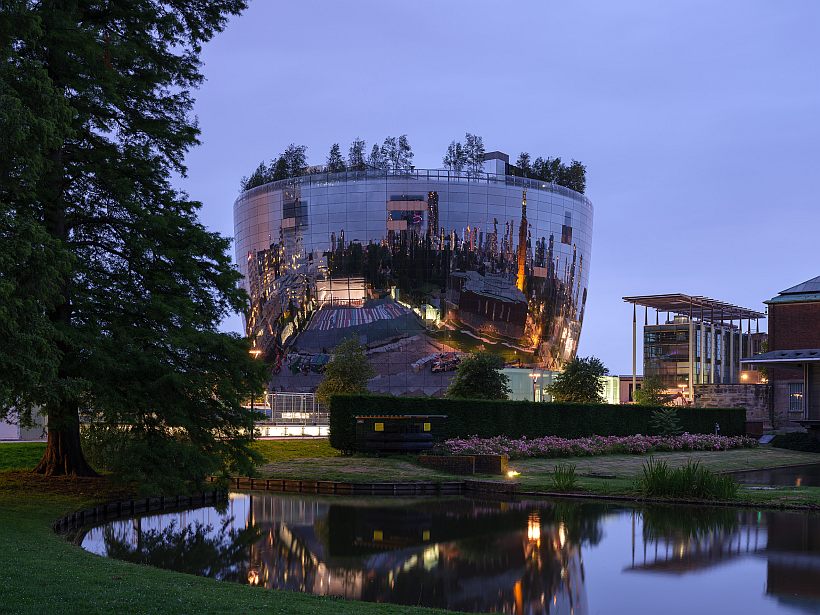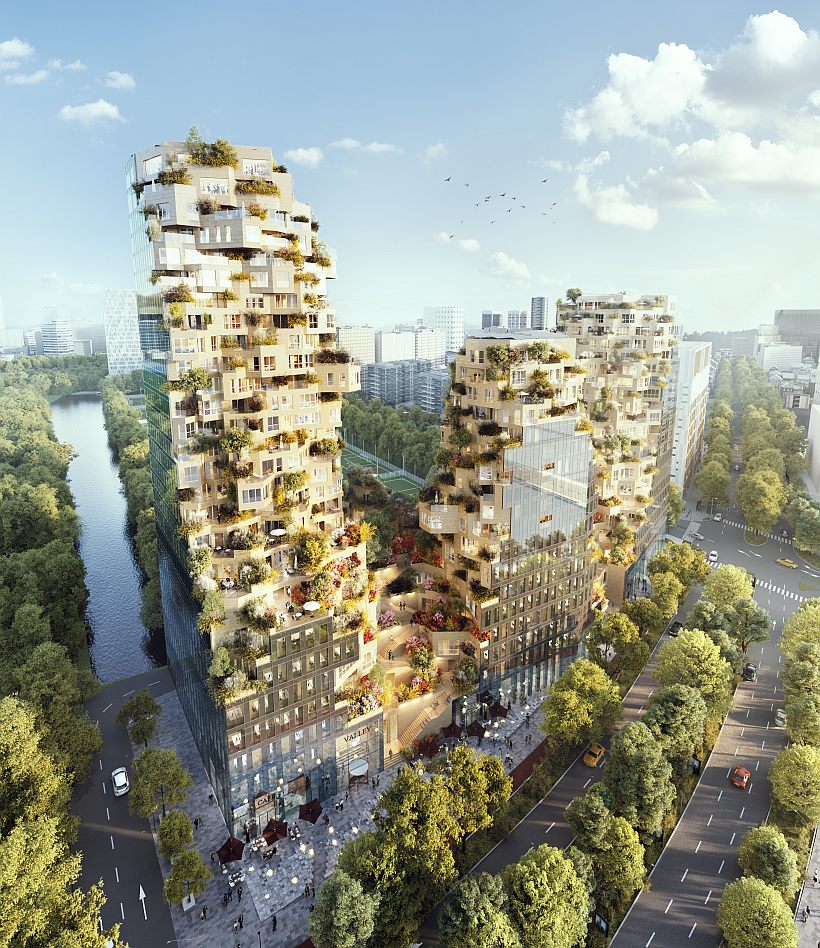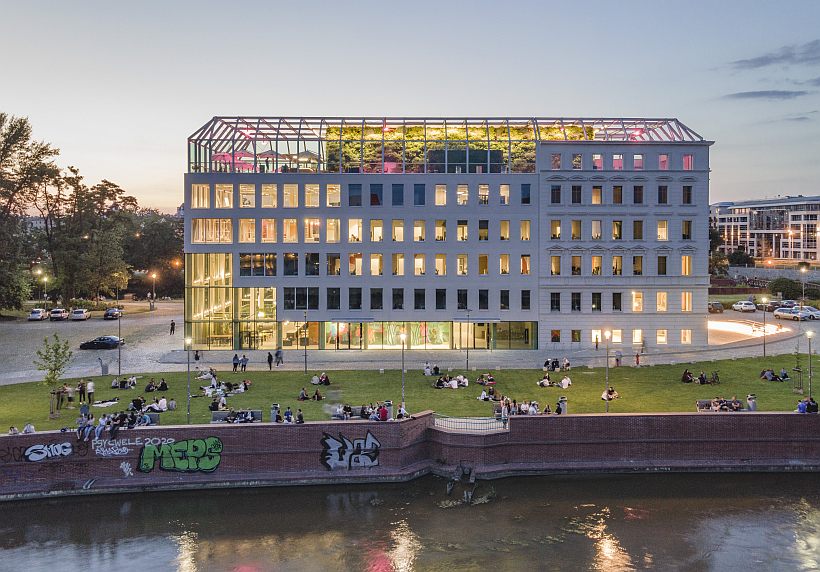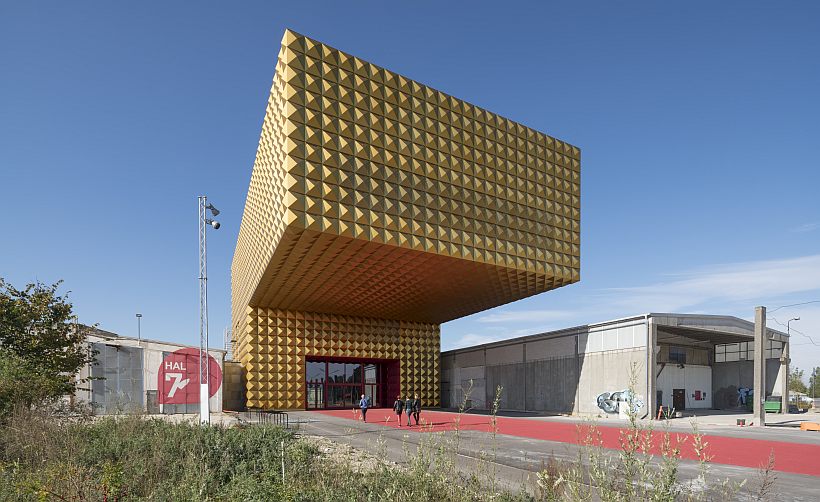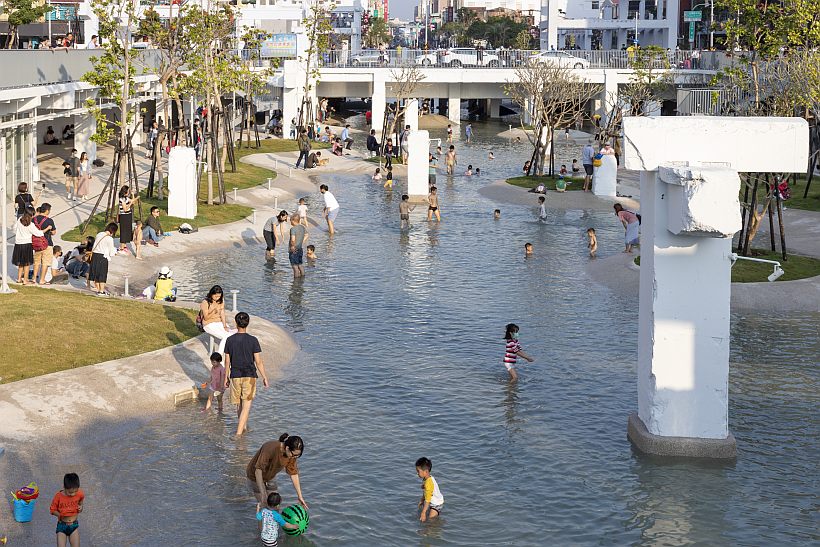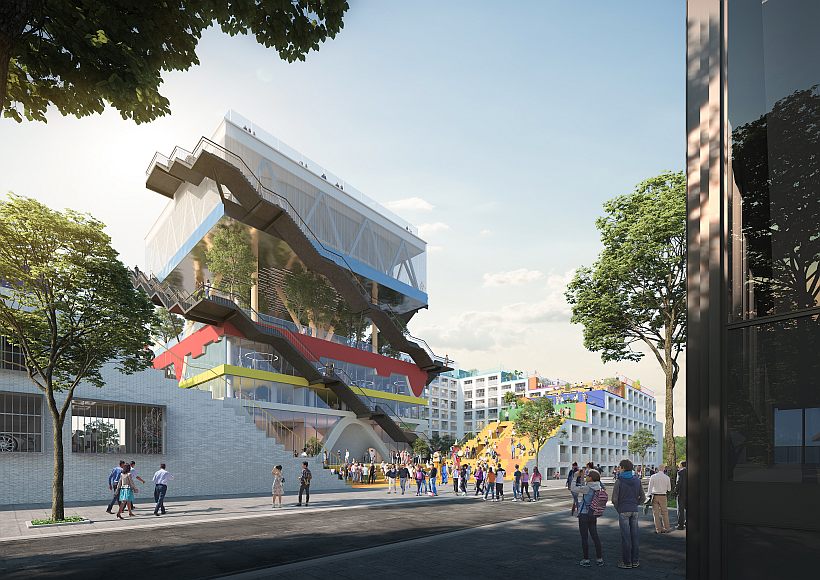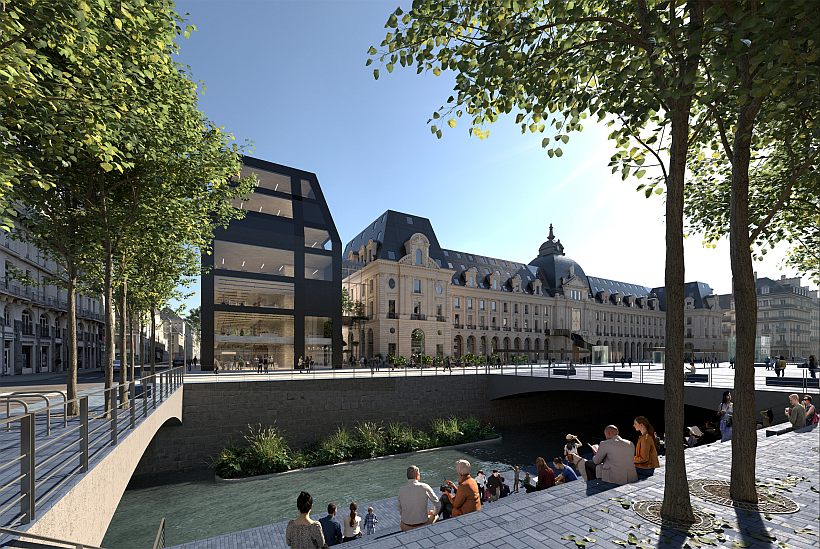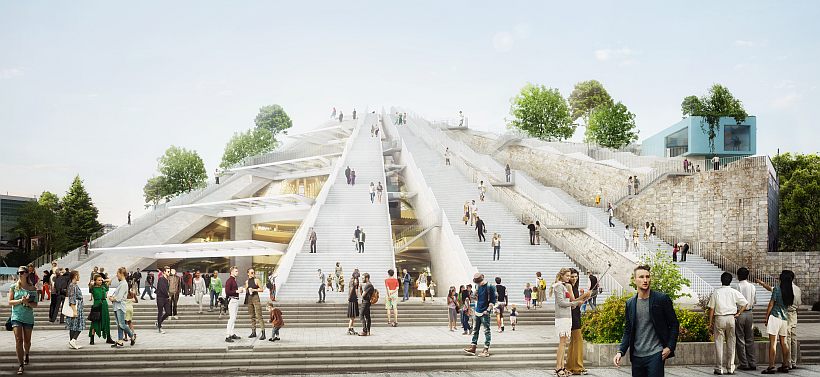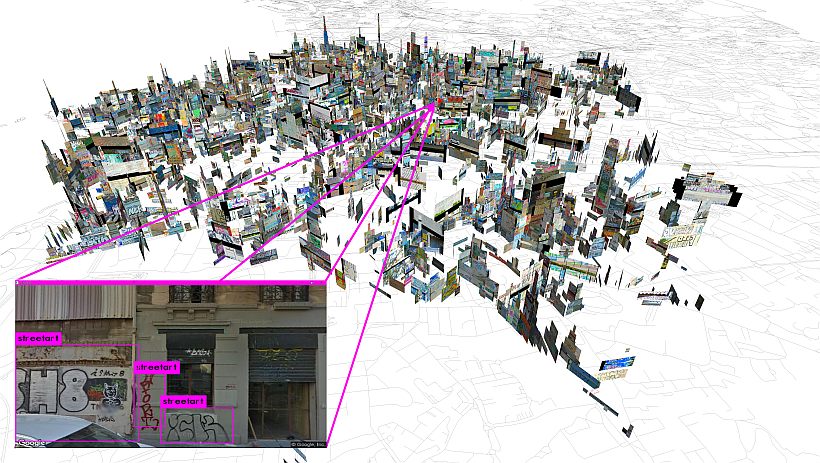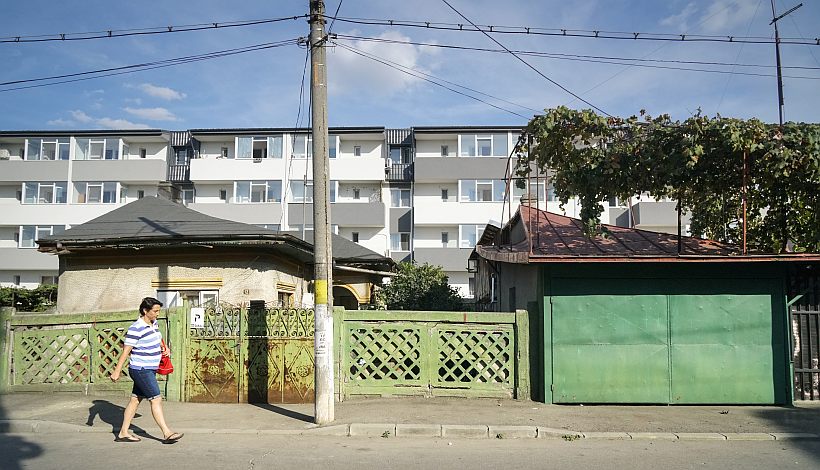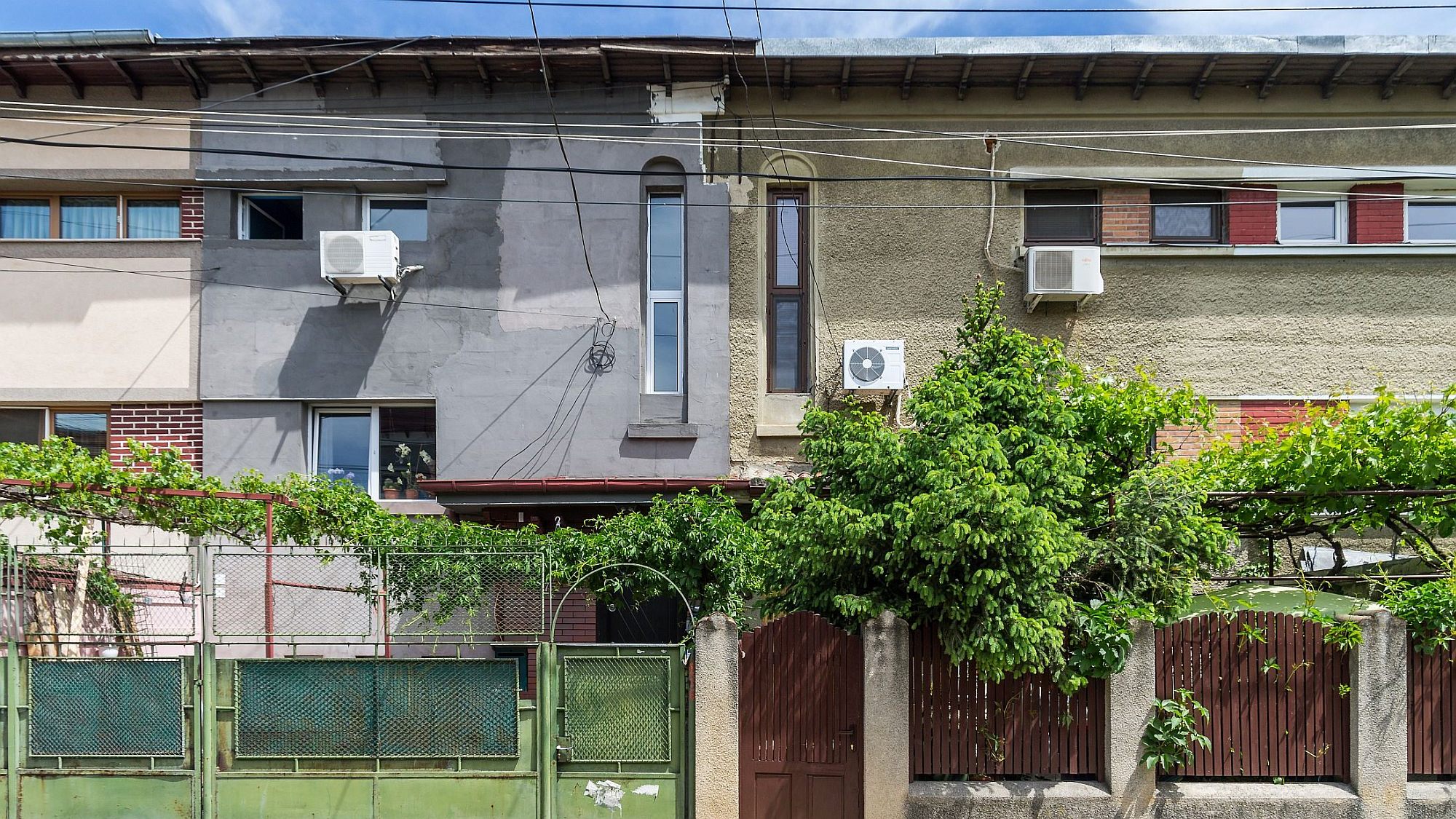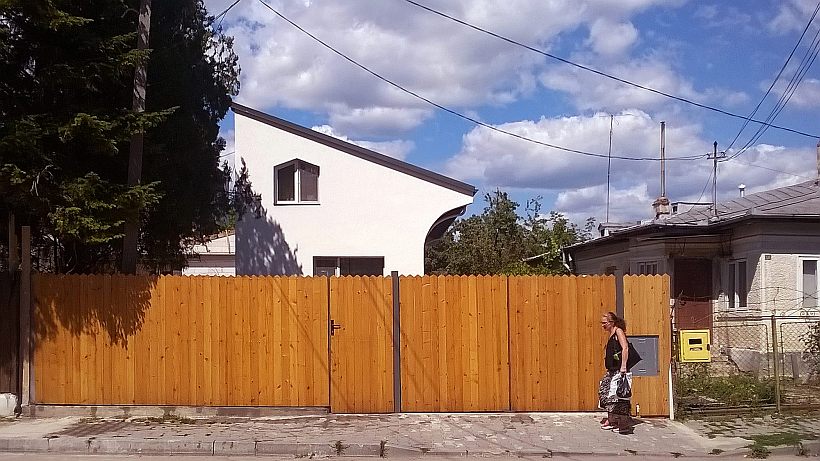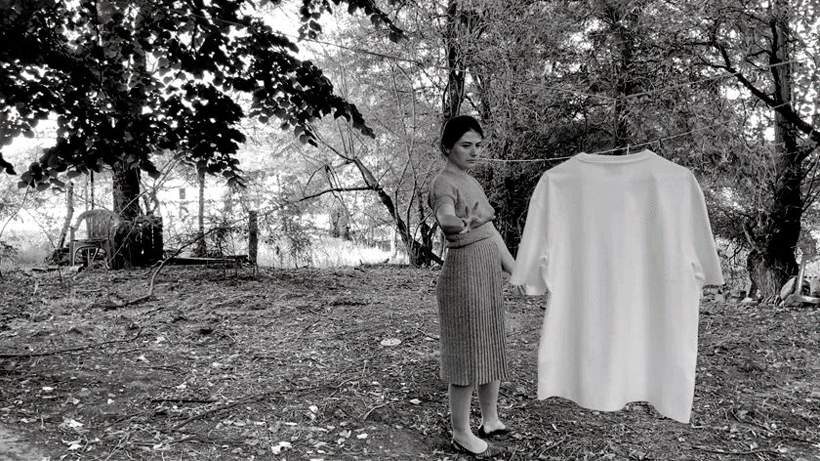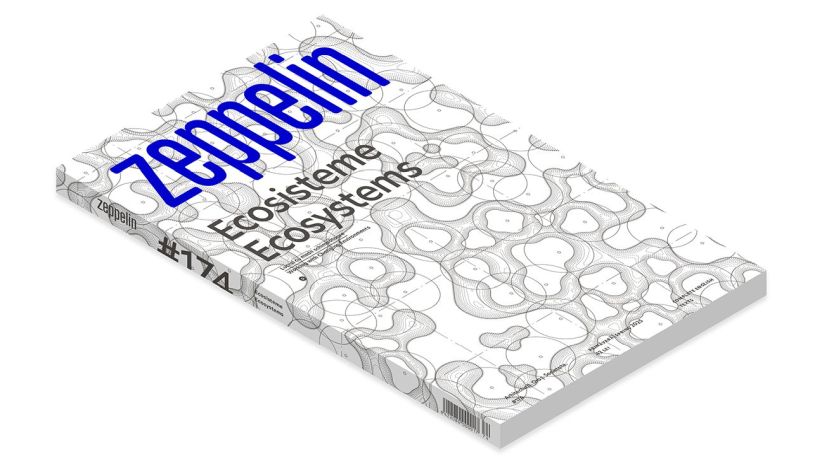The Centre for Electronic Industry (as the clients named it) or the Electra factory, as many call it, brings together manufacturing, office, technical and representation spaces, all harmonized within an assembly of three industrial halls. The altogether 11,000 sq. m. are built within the Miroslava Industrial Park in the Iași County, an area that will rapidly develop over the next years.
- Recommend on FacebookTweet about it
An articulation between the city and the Museum Island, between the water and the urban fabric, between the Neues Museum and the Pergamon Museum, between public space and the one for the culture, between tradition and today’s technology and culture.
- Recommend on FacebookTweet about it
The design for a coffee shop & ice cream parlor brings to front a woioonderful Art-Deco building.
Text: Ştefan Ghenciulescu
Photo: Alex Sacalu, Corvin Cristian- Recommend on FacebookTweet about it
14 years ago, in issue 52 of our magazine, we published a dossier dedicated to one of themost inventive and bold architectural offices in the world. Curated with the help of Oana Radeș ( then a member of the bureau, now a partner at Shift Architecture Urbanism), that dossier is still one of our most important materials.
- Recommend on FacebookTweet about it
It might sound a little unprofessional, but we simply couldn’t come up with a single umbrella term for “collective apartment buildings with a reduced number of housing units”. The urban villa comes closest to the subject matter, but for many people the urban villa is quintessentially a detached building, usually surrounded by its own piece of land. There is also the Italian version – palazzina, which actually also means “small block” (specifically, the apartment building is a palazzo in Italian).
- Recommend on FacebookTweet about it
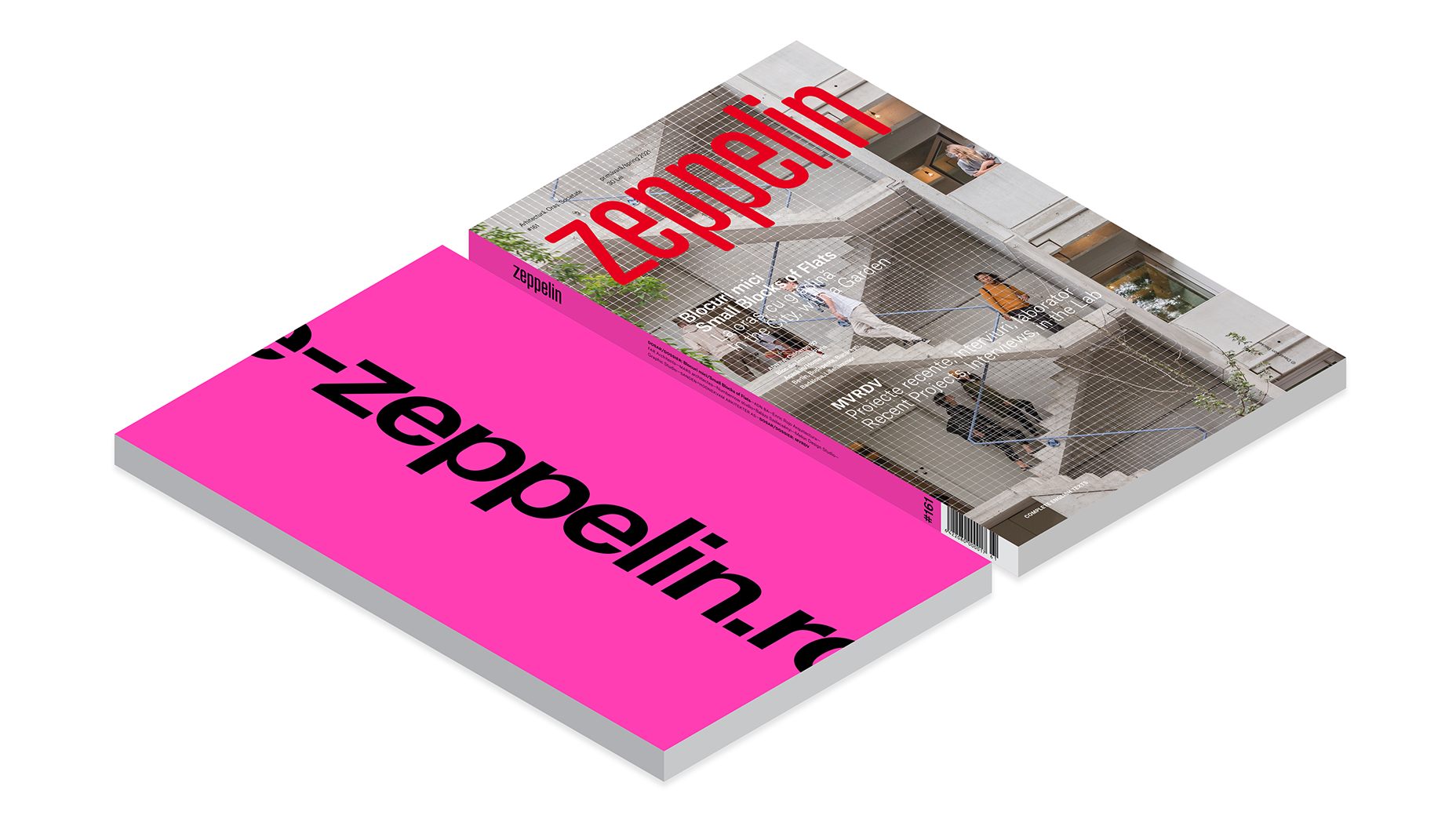
Edito: They cleaned it up
Text: Ştefan GhenciulescuIn Romanian society, one of the most common (and terrible) value confusions is, I believe, the one between beautiful, new or in good condition, on the one hand, vs. ugly, old, in poor condition, on the other. And it primarily shows when talking about architecture and the city. The reasons are many – from lacking visual education to our general frustrations or the uncertain relationship with the past, which we’d rather have mythically, than revealed through tangible traces. We are a conservative society (in some respects, even ultra-conservative), but one which does not like to conserve. The old is suspicious. That is, the actual old, while the new in the faux old, fake traditional style, is in great demand. (…)
DOSSIER
Small Blocks of FlatsIntro
Text: Ştefan GhenciulescuCalderon 80 Residence
BucharestProject: ADN BA
Urban Infill
Enric Rojo Arquitectura: PIC—Apartment Building, BadalonaPrefab Story
FAR Architects: Wohnregal, BerlinWood is for Apartment Buildings
MARS architectes: An Environmentally Conscious Apartment Block in ParisMonolith and Human Scale
SA43: Apartment Building, BudapestTaming
Melon Design Studio: Remodelling a Young Housing Block in BucharestAt the Crossing
Graphic Studio: Apartment Building on Răsuri StreetHouse in Red Concrete
LillehammerDOSSIER
MVRDVIntro
Curators: Ştefan Ghenciulescu, Miruna DunuEvery Project Becomes a Prototype for Pushing Boundaries
A Discussion with Nathalie de VriesBałtyk Tower
PoznańBjørvika Barcode and DNB House
OsloWERK12
MünchenDepot Boijmans Van Beuningen
RotterdamValley
AmsterdamConcordia Design
WrocławROCKmagneten
Roskilde, DanemarcaTainan Spring
TaiwanExpo Pavilion 2.0
A New LifePalais du Commerce
RennesThe Pyramid of Tirana
NEXT: Access to Tooling
Extensions, Hacks and Speculations
Text: Leo Stuckhardt, MVRDV NEXTAbout and for Romanian Architecture
Text; Jan Knikker & Miruna DunuPLANS
- Recommend on FacebookTweet about it
In Romanian society, one of the most common (and terrible) value confusions is, I believe, the one between beautiful, new or in good condition, on the one hand, vs. ugly, old, in poor condition, on the other. And it primarily shows when talking about architecture and the city.
- Recommend on FacebookTweet about it
Excellently located in the “old” sector of the former Carol Street—the commercial street of the once thriving market town of Mizil—across the street from the high school, the house is a reinterpretation of the good old “train car house” type. An ample eave is added on one side of the house, framed by two rounded gables.
- Recommend on FacebookTweet about it
In 2019, Kunsthalle Bega initiated the programme BEGA ARTPRIZE, the only curatorial prize in Romania which is awarded annualy, following consultations with a specialised jury, to a curator under the age of 40. The first laureate of the prize was Anca Verona Mihuleț, who over the last two years has been preparing a complex exhibition project dedicated to the cumulus of technologic and artistic mechanisms that validate our perception about the future
- Recommend on FacebookTweet about it
Zeppelin Design & more @ Romanian Design Week 2020
Text: Constantin Goagea
Photos: Andrei Mărgulescu
Curatorial concept: Romanian Design Week and Zeppelin Design
Exhibition design: Zeppelin Design+Ping Pong winners+- Recommend on FacebookThis website uses cookies to improve your experience. We'll assume you're ok with this, but you can opt-out if you wish.Accept Read MorePrivacy & Cookies Policy
Privacy Overview
This website uses cookies to improve your experience while you navigate through the website. Out of these, the cookies that are categorized as necessary are stored on your browser as they are essential for the working of basic functionalities of the website. We also use third-party cookies that help us analyze and understand how you use this website. These cookies will be stored in your browser only with your consent. You also have the option to opt-out of these cookies. But opting out of some of these cookies may affect your browsing experience.Necessary cookies are absolutely essential for the website to function properly. This category only includes cookies that ensures basic functionalities and security features of the website. These cookies do not store any personal information.Any cookies that may not be particularly necessary for the website to function and is used specifically to collect user personal data via analytics, ads, other embedded contents are termed as non-necessary cookies. It is mandatory to procure user consent prior to running these cookies on your website.


